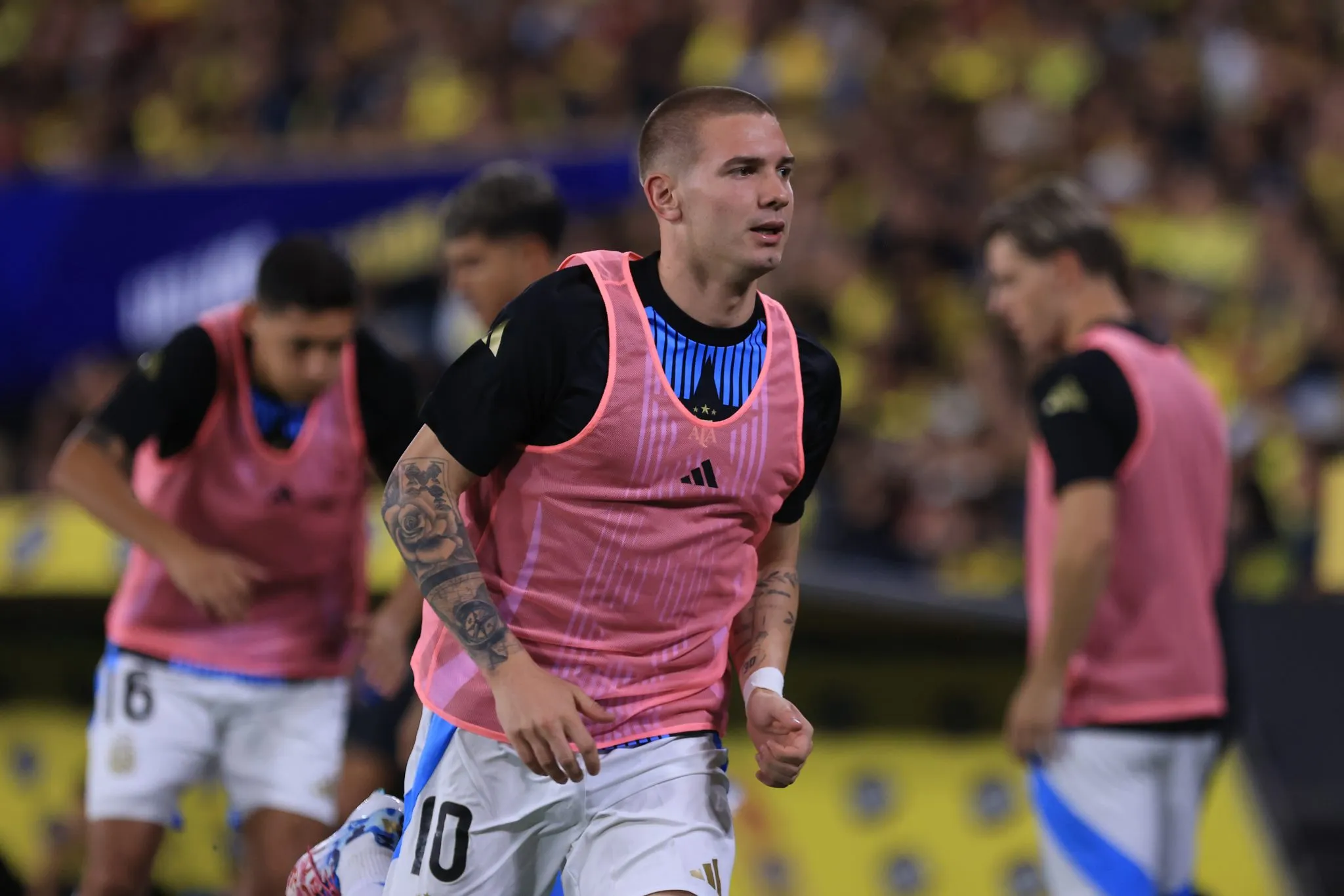Subtotal $0.00
Background
Rising talent under international spotlight
Real Madrid’s Franco Mastantuono has emerged from the club’s academy as one of the most promising midfielders in Europe. The latest chatter centers on a U-20 World Cup call-up for Argentina, which would mark a pivotal moment in his development. For Madrid, the potential loss of a rising midfielder would have consequences beyond a single tournament. The U-20 World Cup call-up could accelerate his growth by exposing him to elite international competition, while testing the club’s depth and rotation plans amid a crowded calendar. The balance between nurturing a young talent and maintaining competing standards is delicate, especially at a club that blends domestic battles with European ambition.
The chatter intensified after a report on El Chiringuito TV by Jose Luis Sánchez suggested Argentina could name Mastantuono to their U-20 squad later this year. If confirmed, the U-20 World Cup call-up would mean a disconnect from Real Madrid’s training and match schedule and a commitment that could last several days or even weeks depending on the tournament dates. Madrid would need to manage travel, training, and fitness to ensure he returns ready to contribute. The dynamic is not new; clubs routinely navigate dual commitments with youth internationals, but Mastantuono’s rising status adds intensity to the negotiation. For the latest perspective, see the update here: El Chiringuito report.
Player profile
Franco Mastantuono: The profile of a Madrid academy star
At the heart of Madrid’s academy is a technically polished midfielder with an eye for space and a knack for breaking lines. Mastantuono plays as a central or box-to-box midfielder, capable of dictating tempo, picking quick passes, and driving into spaces when the team transitions. His development has been steady, marked by improved physical maturity, sharper off-ball movement, and a growing sense of when to press and when to drop deeper. Coaches at Real Madrid’s youth setup have emphasized discipline, game intelligence, and resilience—traits that set him apart from peers and hint at a future first-team role.
What edges him toward a potential breakthrough are his decision-making instincts and range of passing. He can switch play with precision, isn’t afraid to take compact angles, and links play between defense and attack with a calmness that belies his years. In addition, his adaptability to different midfield roles gives Madrid tactical flexibility in moments of heavy schedule load. A Real Madrid profile would highlight his balance between technical ability and work-rate, two essential ingredients for a player who could be called upon during congested periods. For more context on Madrid’s youth development program, you can explore their official site here: Real Madrid official site.
Call-up considerations
Coordination between federation and club, and window management
The possibility of an international call-up invariably triggers complex logistics for a club like Real Madrid. If Mastantuono earns a U-20 World Cup call-up, Madrid would weigh several factors: the length of the tournament, potential travel times, and the risk of fatigue ahead of important fixtures in La Liga and the UEFA competitions. The Argentine federation has shown interest in bringing through young talent, and national teams often negotiate with clubs to create workable windows where players can participate without derailing club plans. Madrid’s immediate priority is to protect Mastantuono’s development while safeguarding the team’s depth in midfield. Negotiations could include restricted participation, flight arrangements that minimize disruption, or returned days aligned with Madrid’s training blocks. Outbound link to the federation’s event page would typically be considered in such discussions: FIFA U-20 World Cup.
Impact on Real Madrid’s schedule
Rotation, fixtures, and the calendar pressure
Real Madrid enters a season where every week brings multiple competitions and a dense calendar. A potential U-20 World Cup call-up for Mastantuono could sideline him for up to seven Real Madrid fixtures, depending on how the tournament overlapping with club commitments is scheduled. That possibility forces Madrid to rethink rotation plans, prioritize development, and ensure midfield balance remains intact. The club would need contingency options—players who can step in during late-formed congestions, plus a phased return to training to prevent abrupt drops in form. The challenge is not just the absence of a single player, but how his absence impacts the team’s rhythm, scouting of potential replacements, and long-term development pathways for the academy cohort that includes Mastantuono. For context on Madrid’s current schedule, see their official fixtures page linked here: Real Madrid schedule.
What happens next
Pathways, timelines, and contingency planning
The future hinges on the federation’s formal decision and Mastantuono’s readiness to commit. If Argentina includes him in their U-20 roster, Madrid would coordinate to secure a smooth return, minimize time away from first-team duties, and manage the physical toll. That plan could involve structured rest or targeted conditioning upon his return, ensuring he recovers quickly from any travel and tournament weariness. If he’s not called up, Madrid will likely accelerate his integration into regular squad duties, including training with the first team, matchday rotation, and potential appearances in domestic cups. Either outcome affects Madrid’s tactical setup and investment in midfield depth for the season. The broader trend remains clear: national teams continue to court young talents from top clubs, a path that raises market value while testing clubs’ patience and planning. For more on the international dimension of this trend, FIFA’s youth page provides useful background: FIFA U-20 World Cup.




